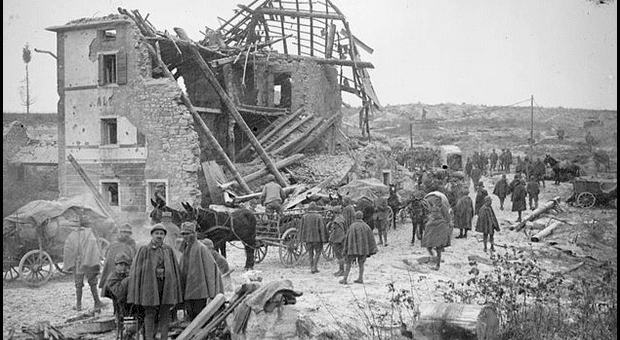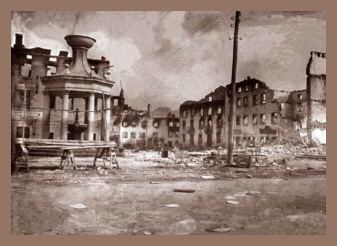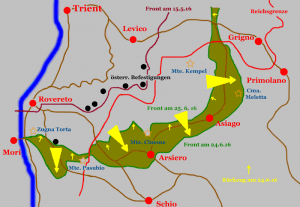Dates 15 May 1916 – 10 Jun 1916 | Result Italian defensive victory | |
 | ||
172 battalions850 guns 300 battalions2,000 guns 140,000 casualties 12,000 dead80,000 wounded50,000 taken prisoner 100,000 casualties 15,000 dead75,000 wounded15,000 missing and taken prisoner Similar World War I, Italian Front, Battle of Mount Ortigara, Battle of Caporetto, Battle of Vittorio Veneto | ||
Battle of asiago
The Battle of Asiago (Battle of the Plateaux) or the Trentino Offensive (in Italian: Battaglia degli Altipiani), nicknamed Strafexpedition ("Punitive expedition") by the Austrians, was a counteroffensive launched by the Austro-Hungarians on the Italian Front on May 15, 1916, during World War I. It was an unexpected attack that took place near Asiago in the province of Vicenza (now in northeast Italy, then on the Italian side of the border between the Kingdom of Italy and Austria-Hungary) after the Fifth Battle of the Isonzo (March 1916). Commemorating this battle and the soldiers killed in World War I is the Asiago War Memorial.
Contents
Background

Already for some time the Austrian commander-in-chief, General Conrad von Hötzendorf, had been proposing the idea of a Strafexpedition that would lethally cripple Italy, Austria-Hungary's ex-ally, claimed to be guilty of betraying the Triple Alliance, and in previous years he had had the frontier studied in order to formulate studies with regard to a possible invasion.

The problem had appeared to be serious, mostly because the frontier ran through high mountains and the limited Italian advances of 1915 had worsened the situation and excluded a great advance beyond the valleys of Valsugana and Val Lagarina (both connected by railway) and the plateaus of Lavarone, Folgaria and Asiago.

The geographic location of the routes of advance was conducive to the original plan which called for an advance from Trent to Venice, isolating the Italian 2nd and 3rd Armies who were fighting on the Isonzo and the Italian 4th Army who was defending the Belluno region and the eastern Trentino.

The preparations for the battle began in December 1915, when Conrad von Hötzendorf proposed to his German opposite number, General Erich von Falkenhayn, shifting divisions from the Eastern Front in Galicia to the Tyrol, substituting them with German divisions. His request was denied because Germany was not yet at war with Italy (which would declare war on Germany three months later), and because redeploying German units on the Italian Front would have diminished German offensive capability against Russia. After having received a negative reply from the Germans, who refused the proposed replacement and actively tried to discourage the Austro-Hungarian proposed attack, Conrad von Hötzendorf decided to operate autonomously. The 11th Austro-Hungarian Army, under the command of Count Viktor Dankl, would carry out the offensive followed by the 3rd Army under Hermann Kövess. It was not so easy, however, because the Italians had deployed in the area about 250,000 troops (General Brusati's First Army and part of the Fourth Army). Italian intelligence had been gathering information about an impending enemy offensive in Trentino — and a big one — for about a month, but Cadorna dismissed those reports, persuaded as he was that nothing could happen in that region.
Battle
On May 15, 1916, 2,000 Austrian artillery guns opened a heavy barrage against the Italian lines, setting Trentino afire. The Austrian infantry attacked along a 50 km front. The Italian wings stood their ground, but the center yielded, and the Austrians broke through, reaching the beginning of the Venetian plain. With Vicenza about 30 km away, all the Italian forces on the Isonzo faced outflanking.
Cadorna hastily sent reinforcements to the First Army, and deployed the newly formed Fifth Army under Pietro Frugoni to engage the enemy in case they succeeded in entering the plain. The situation was critical.
However, on June 4, the Russians unexpectedly took the initiative in Galicia, where they managed to enter Austrian soil. Although they were effectively countered by German and Austro-Hungarian troops, Hötzendorf was forced quickly to withdraw half of his divisions from Trentino. With that, the Strafexpedition could no longer be sustained and the Austrians retired from many of their positions. Italian troops in the region were increased to 400,000 to counter the Austrian positions.
Although the Strafexpedition had been checked, it had political consequences in Italy: the Salandra Cabinet fell, and Paolo Boselli became the new Prime Minister.
